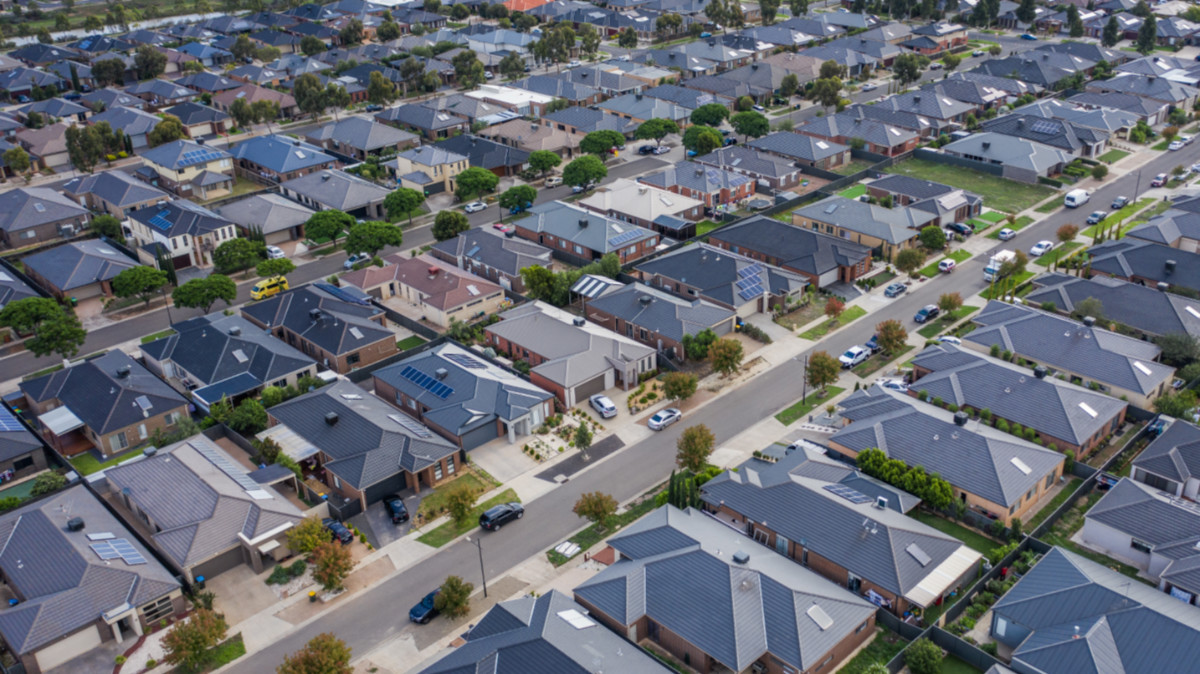ASX Real Estate Investment Trusts (REITs) guide 2021: Here’s everything you need to know

Here's Stockhead's guide to ASX Real Estate Investment Trusts (REITs)
REITs (Real Estate Investment Trusts) are a unique asset class on the ASX. Here’s a guide on what you need to know about REITs.
Key Points
- REITs are listed trusts which focus on various property assets which are leased out
- Compared to investing in off-market properties or shares in property development entities, REITs offer the advantages of liquidity, diversification, income stability and potentially more favourable tax treatment
- COVID-19 restrictions have hit some ASX listed REITs in causing their incomes to fall and some to raise capital.
- But 2021 has been a far better year with the average performance being a gain of 15% as opposed to a 9% loss last year.
- Again the performance of REITs has depended on their niche, with logistics and consumer staples being two particularly strong categories thanks to the ecommerce boom.
What are REITs?
In simple terms REITs are a type of listed trust focused on property assets. REITS own property assets ranging from agricultural land to shopping centres and collect rental income from them.
These are typically larger assets out of reach of the average retail investor but it allows investors to share in their ownership and receive rental income.
“Typically the vehicle needs to be focused on owning property to generate rental income so it will not have exposure to development and other activities – it’s about owning properties and collecting rent,” Morningstar Alexander Prineas told Stockhead last year.
REITs first emerged in the early 1970s starting with the General Property Trust. Until 2008, REITs generally were known as listed property trusts.
Why do people invest in REITs?
1. Liquidity
There are several reasons why people invest in REITs. First, being listed allows the investment to be more liquid.
You can buy and sell units just like any other ASX share – a far easier process than most other property transactions.
2. Diversification
Second, REITs allows for greater diversification than investing in one property asset.
“You can get diversification an individual investor wouldn’t achieve,” Prineas said.
“They quite commonly take the form of a stapled security – what that means is you’ll have two securities together, the REIT and a company which undertakes more activities not related to just earning property.
“That’s quite a common structure for companies like Mirvac. If you buy Mirvac you own a share in the corporation and property trust.”
3. Income certainty (usually)
Thirdly, Prineas also says investors have liked REITs because of their income, particularly in a time of low interest rates and market uncertainty.
“They’re a source of income and rightly or wrongly they’ve viewed as a bit of a bond proxy because the income [until 2020] was predictable,” he said.
“As 2020 has shown there is some risk in REITs so they shouldn’t be viewed simply as a bond proxy – they do have equity risk in there as well.”
4. Different tax treatment
Fourth, investors may prefer the different tax treatment of REITs – not being subject to corporate tax.
“Generally speaking the income is passed through to the investor and the investors pay tax,” Prineas explained.
“[It] will typically pay a higher yield because they’re passing it all through – the yield will not be franked because they don’t pay company tax.”
What has COVID done to REITs?
But as with every other market, COVID-19 has turned many market norms on its head. For REITs the most pertinent fundamental turned upside down is the certainty of income.
The earnings of some REITs have been threatened because of people avoiding the assets – either voluntarily or mandated by lockdowns.
“2020 was a tough year [with] significant negative returns and significantly behind the broader equity market,” Prineas told Stockhead in September.
“2021 – there’s been a decent recovery but property stocks this year have been in line with the overall market, so although there’s been a recovery they haven’t made up the underperformance they delivered in 2020.
Some REITs introduced dividends (or distributions as they are more commonly called) but at a lower level than pre-COVID times.
“We still think there’s room for those distributions to recover, maybe not to levels before the pandemic but still significant room for recovery just as the outlook becomes clearer and their income is restored,” Prineas said.
“We still expect recovery in income but we don’t advise investors to use one-year dividend yield metrics as a guide to valuation or risk or outlook at the moment.
“You have to dig a bit deeper because incomes are so changeable – either up or down – and the price volatility. If you’re looking at one-year forward dividend yield it can be misleading.”
In a time of record low interest rates, anything other than keeping cash at the bank offers a chance of return so many REITs have used the pandemic-driven property boom to undertake acquisitions or have parted ways with assets at hefty premiums to what they first acquired them for.
“That chase for long term yield in an environment with such low term deposit rates and dividends generally, it’s looking attractive,” Arena REIT boss Rob de Vos told Stockhead in August.
“We’re certainly seeing a lot of support, that underlying property values continue to go up.”
The sectors that benefited the most
Two sectors that have done particularly well are consumer staples and industrials which have gained from remote working and the ecommerce boom.
Many ASX REITs in these space have been the fastest to see their profits return, leading to the companies reinstating or increasing distributions and upgrading their property valuations.
One example is SCA Property Group (ASX:SCP) which grew its post-tax profit by 441%, which it credited to an increase in value of its properties.
Although its earnings copped a $7.3 million hit from factors directly linked to COVID-19, this was lower than the $20.5 million hit in FY20.
Last week it upgraded its properties again to $4.656 billion, which was up from $4.0 billion just six months prior. While acquisitions made up $293 million of the increase, $384 million came from a valuation increase.
“Our assets that are out in the suburbs have done well because everyone’s been working from home, they haven’t been going to the cities and the big shopping centres – so that’s been quite good for us,” managing director Anthony Mellowes told Stockhead last week.
While major tenants Woolworths (ASX:WOW) and Coles (ASX:COL) are also upping their game in ecommerce and opening major distribution centres, Mellows was not worried, noting they would use local outlets as their “last mile” solution, at least in outer suburbs and regional areas.
“It’ll be a bit of a mix but we still think the store-based model will be the predominant model for online grocery deliveries, and [also] pickup – click and collect is actually growing faster than online deliveries,” CFO Mark Fleming.
Some REITs in industries affected by the pandemic were able to ride out the worst times thanks to government support which kept tenants in operation or in hibernation until they can return – with childcare being one example.
REITs on the ASX
There are 46 REITs on the ASX – slightly more than last year.
This year has seen two IPOs – one more than last year – in Home Consortium’s Healthcare and Wellness REIT (ASX:HCW) and Newmark Property REIT (ASX:NPR).
However the bourse has lost APN Property Group (ASX:APD) which was acquired by Dexus (ASX:DXS) earlier this year.
In the last 12 months the average REIT has gained 15 per cent. But some have done even better than that.
Here’s a list of all REITs on the ASX and their performance…
Swipe or scroll to reveal the full table. Click headings to sort.
| Code | Company | Price | %Mth | %SixMth | %Wk | %Yr | MktCap |
|---|---|---|---|---|---|---|---|
| HMC | Home Consortium | 7.66 | -4 | 54 | 6 | 90 | $ 2,223,440,279.30 |
| ARF | Arena REIT. | 4.36 | -4 | 27 | 0 | 50 | $ 1,520,641,408.00 |
| APZ | Aspen Group | 1.675 | 0 | 26 | 0 | 40 | $ 233,776,855.60 |
| GMG | Goodman Group | 25.2 | 7 | 24 | 2 | 39 | $ 47,322,078,685.97 |
| CHC | Charter Hall Group | 19.41 | 1 | 33 | 0 | 37 | $ 9,194,440,565.94 |
| CNI | Centuria Capital | 3.295 | -1 | 22 | 5 | 36 | $ 2,615,463,067.41 |
| INA | Ingenia Group | 6.12 | -4 | 5 | 2 | 31 | $ 2,519,834,913.20 |
| AVN | Aventus Group | 3.38 | -3 | 13 | 4 | 30 | $ 1,942,647,395.40 |
| GDF | Garda Prpty Group | 1.565 | 2 | 21 | 1 | 28 | $ 356,263,424.97 |
| CIP | Centuria I REIT | 3.895 | 5 | 6 | 6 | 26 | $ 2,474,691,620.78 |
| URF | Us Masters Res Fund | 0.315 | 7 | 17 | -2 | 26 | $ 124,719,345.14 |
| NSR | National Storage | 2.5 | 4 | 23 | 2 | 24 | $ 2,983,889,352.89 |
| LEP | ALE Property Group | 5.72 | 3 | 27 | 2 | 24 | $ 1,147,330,824.64 |
| RFF | Rural Funds Group | 3.01 | 5 | 21 | 4 | 23 | $ 1,159,356,233.28 |
| CQE | Charter Hall Soc In | 3.83 | 2 | 11 | 2 | 20 | $ 1,398,336,103.68 |
| ABP | Abacus Property Grp. | 3.51 | -2 | 13 | 1 | 19 | $ 2,944,649,713.62 |
| DXI | Dexus Industria REIT | 3.41 | 1 | 8 | 3 | 18 | $ 1,088,344,333.01 |
| HDN | Homeco Daily Needs | 1.47 | -1 | 2 | 7 | 18 | $ 1,148,184,288.34 |
| GOZ | Growthpoint Property | 4.135 | -2 | 4 | 2 | 16 | $ 3,196,315,922.04 |
| DXS | Dexus | 11.01 | -2 | 4 | 2 | 15 | $ 11,981,796,840.44 |
| AOF | Australian Unity Off | 2.42 | 6 | -11 | 6 | 13 | $ 391,232,580.06 |
| SCP | SCA Property Group | 2.845 | -2 | 14 | 3 | 11 | $ 3,175,152,409.00 |
| CQR | Charter Hall Retail | 4.165 | -2 | 9 | 2 | 11 | $ 2,417,626,238.94 |
| HPI | Hotel Property | 3.46 | -1 | 5 | 0 | 11 | $ 662,542,840.72 |
| GPT | GPT Group | 5.17 | 0 | 9 | 1 | 10 | $ 10,037,625,733.20 |
| MGR | Mirvac Group | 2.915 | 2 | -1 | 3 | 10 | $ 11,670,298,058.48 |
| COF | Centuria Office REIT | 2.285 | -3 | -2 | 2 | 5 | $ 1,364,020,905.93 |
| CLW | Chtr H Lwr | 5.02 | 4 | 2 | 4 | 5 | $ 3,220,854,541.08 |
| ECF | Elanor Comm Prop | 1.12 | 2 | -1 | 3 | 5 | $ 316,556,353.13 |
| ERF | Elanoretl Property | 1.08 | -1 | 5 | 1 | 4 | $ 137,929,743.00 |
| CDP | Carindale Property | 4.725 | 1 | 6 | 2 | 4 | $ 336,811,296.15 |
| NPR | Newmark Property | 1.9 | $ 344,223,522.82 | ||||
| HCW | Hlthcohcwellnsreit | 2.37 | 12 | 9 | $ 767,362,526.68 | ||
| AGJ | Agricultural Land | 0.03 | 0 | 0 | 0 | 0 | $ 2,744,175.63 |
| SGP | Stockland | 4.31 | -5 | -8 | 1 | 0 | $ 10,336,453,296.46 |
| VCX | Vicinity Centres | 1.735 | -2 | 5 | 4 | 0 | $ 7,989,243,253.29 |
| WPR | Waypoint REIT | 2.705 | -2 | 3 | 2 | -1 | $ 1,977,802,842.37 |
| DXC | Dexus Conv Ret REIT | 3.49 | 3 | -6 | 0 | -3 | $ 485,626,457.18 |
| CMW | Cromwell Prop | 0.8725 | 4 | -3 | 2 | -4 | $ 2,303,374,194.00 |
| BWP | BWP Trust | 4.14 | 0 | -3 | 1 | -4 | $ 2,678,740,458.51 |
| URW | Unibailrodawestfield | 4.79 | -10 | -23 | 2 | -4 | $ 963,088,630.00 |
| GDI | GDI Property Grp | 1.085 | -4 | -6 | -1 | -4 | $ 584,819,777.26 |
| WOT | Wotso Property | 1.38 | -1 | -1 | -2 | -5 | $ 224,900,479.56 |
| APW | Aims Pror Sec Fund | 1.24 | -1 | 5 | 5 | -8 | $ 55,307,822.92 |
| TGP | 360 Capital Grp | 0.83 | -1 | -11 | -1 | -13 | $ 180,672,979.58 |
The top winners
The sector’s best performer is consumer staple asset owner Home Consortium (ASX:HMC) which is up 90% in the last year.
It has listed two further REITs since 2019 – the HomeCo Daily Needs REIT (ASX:HDN) as well as the Healthcare and Wellness REIT (ASX:HCW).
The former is up 18% in the last year while the latter is up 7% in the three months since listing.
The second best ASX REIT is Arena REIT (ASX:ARF) which specialises in “social infrastructure”, particularly early learning and healthcare facilities.
In third is Aspen Group (ASX:APZ) which specialises in accommodation in the residential, retirement and short stay sectors.
The largest ASX REIT, Goodman Group (ASX:GMG), capped at over $46 billion, is the fourth best winner this year. This ASX giant focuses on industrial properties including warehouses and office parks.
While online and digital activity has seen a fall in company offices, it has been the opposite for facilities on Goodman’s portfolio, particularly those that support online retailers thanks to the ecommerce boom.
Industry giants hit by COVID-19 are recovering
In 2021 only a handful of ASX REITs are in negative territory and many that were hit the worst have gained in the new year.
However, these companies have been the exception rather than the norm and even companies hit by the Sydney and Melbourne lockdowns are still up this year.
The handful of REITS focusing on office space such as Dexus (ASX:DXS) and Mirvac (ASX:MGR) have had tenants hang on and reported workers returning to the office faster than last year.
Agriculture REIT Rural Funds (ASX:RFF) has benefited from the bumper agriculture conditions with the ending of the drought.
National Storage (ASX:NSR) reported a drop in business when COVID-19 first broke out but conditions went back to normal relatively fast and its share price is up 24% in 2021.
Two of the “worst” performers are actually Vicinity Centres (ASX:VCX) and Unibail (ASX:URW).
Compared with REITs such as SCA Property Group (ASX:SCP), the former two companies have larger assets in major localities – such as CBDs – and tenants and shoppers have been slower to return compared to more localised outlets.
Related Topics
UNLOCK INSIGHTS
Discover the untold stories of emerging ASX stocks.
Daily news and expert analysis, it's free to subscribe.
By proceeding, you confirm you understand that we handle personal information in accordance with our Privacy Policy.








